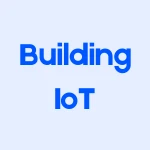
IOT-Based Building Management System – 10 Reasons They’re Smart
A Building Management System (BMS) manages building infrastructure and its various processes on a day-to-day basis. While they have been around for a while, traditional BMSs are being replaced by newer models that are based on the latest technologies such as the internet of things (IoT). And these IoT-based building management systems are quite intelligent - as we discuss in this blog.
The new-age BMSs are like the guardians of your building infrastructure. In the short run, they keep you informed of critical safety and security issues and provide important data. In the long term, they help achieve an organization’s larger energy efficiency and sustainability goals.
What is a BMS?
A building management system (BMS) is an integrated software and hardware system that tracks and helps control the electrical and mechanical components of a building.
It includes HVAC systems, fire systems, security systems, electrical equipment, lighting, elevators, and even IoT sensors in the case of the new-age BMSs.
Why IoT-Based BMSs Are Smart?
1. Useful Energy Data And Analytics - Measure & Control Usage
Managing energy usage is essential for reducing operating costs and increasing productivity. Building management systems prioritize energy use optimization.
In order to maintain optimum energy consumption, you need data. Without the right technology, this is not possible, and this is where a BMS comes in. A BMS gives facility managers access to timely and critical data.
Building owners use the data to take appropriate action and implement the right solutions to become more energy efficient. For example, if you have useful energy-consumption-related data, you can make the appropriate changes to become more energy efficient. Understanding a building's energy usage pattern is crucial. A BMS records how much energy is used by time, source, and other variables.
“A BMS gives facility managers access to timely and critical data.”
2. Achieve Safety Goals Through Process Automation
Due to lack of regular equipment maintenance, most building managers have to deal with system breakdown. At times, these even go undetected. Faulty sprinklers and fire alarms are serious issues for the residents - in case of a fire breakout - as well as the building owners - due to non-compliance.
A BMS built on IoT can identify these problems in advance and help keep such challenges in check. It assists by supplying early warnings and alerts regarding undiscovered flaws in the building's facilities. Building management systems continuously monitor building facilities, identify issues, and help implement fixes.
3. Demand Controlled Space And Energy Use
Usage optimization is an issue in most buildings just because it cannot be done manually. A BMS ensures optimal energy and space usage through automated processes.
An IoT-based BMS is well-equipped to do a real-time analysis to determine whether each room in the building is effectively utilized. It then takes the necessary steps. For example, utilizing sensors and maps, a BMS can identify spaces with high and low occupant influx. Using this information, it then alters the relevant variable - lighting, temperature, etc. - to suit those needs.
Lights auto switch on & off in specific areas in the premises as per occupancy. Ventilation auto starts & stops as per indoor air quality ensuring optimal usage.
4. Achieve Energy Efficiency And Sustainability Objectives
A BMS manages energy use in buildings of all types - due to this building management systems are sometimes called building energy management systems (BEMS).
Being more ecologically and fiscally efficient and responsible is not easy nor simple. More and more buildings are employing a variety of greening strategies. But if not planned well in advance with due considerations to new systems and solutions like smart BMSs, these strategies can be staggered, and in some cases, even counterproductive.
By monitoring every facility in a building, a BMS helps reduce energy use. For example, one of the most crucial energy systems in a building is the HVAC system. The HVAC system contributes to nearly 40% of the total energy consumption in most buildings. Therefore, it is essential to closely monitor HVAC usage. This will increase its efficiency and reduce energy usage and operating expenses. A BMS aids in preserving the HVAC system's effectiveness while enabling efficient energy use. Consequently, the building becomes more environmentally and financially sustainable.
In India, the building sector is the second largest consumer of electricity after industry but it is expected to become the largest energy consuming sector by 2030. The government is realising the importance of the building sector and its focus on improving energy efficiency across residential as well as commercial building establishments. (Ministry of Power, Govt. of India)
5. Manual Processes - A Thing of the Past
Different amenities in multi-storied buildings, whether they are residential or commercial, need to be checked on and maintained every day. For buildings to be sustainable and energy-efficient, automated technologies are required.
With an IoT-based building automation system, you do not have to deal with the issues and challenges posed by manual labor. A BMS ensures the building is automatically managed - like turning the lights on and off as per use and occupancy, regulating the building's temperature as per the weather outside at different times of the day.
6. Record And Analyse Building Resident Behavior
An IoT-based BMS records significant information about resident or occupant behavior. This is used to achieve energy efficiency. With the help of data insights, IoT-enabled BMS can execute several energy and cost-effective approaches based on various factors including activity levels and occupant comfort preferences.
For instance, weather has a direct bearing on how much energy is used. The amount of time that air conditioning (or any other HVAC system) is used during the winter months may be controlled while taking into account the comfort preferences of various occupants.
7. BMS Analyzes Meteorological Data
Energy use is directly influenced by the weather. It is important to ensure thermal comfort for building residents along with optimum energy usage.
BMS and meteorological data are combined in modern buildings to manage energy use in response to climatic variations. For instance, the requirement for air conditioning decreases during the winter, hence the amount of energy used by the HVAC system varies according to that need. When not in use, controls can be turned off, dimmed, or sensor-based controls can be used to regulate the HVAC systems.
For HVAC systems to operate as efficiently as possible, weather data enabled BMS employs real-time data regarding weather forecasting and building occupancy. Climate information offers optimized reactions and requires less upkeep.
8. An Integrated View of Building Management Problems
A 360 degree view means having the entire picture of the building facilities - its functions and maintenance in one platform. An IoT-based BMS has the capability to provide this.
For example, any leakage or fault in the system can be detected earlier by the BMS and then notified to the building authorities with a proper action plan.
Using its algorithms and sensors, a BMS system helps control the entire building, which makes the IoT-based BMS versatile and efficient.
We have arrived in the age of integrated buildings.
9. Based on Latest Technologies
Technology is key. On its own, technology does not amount to anything much. But we all know that when used in the right way and for the right reasons, it can do wonders.
Traditional BMSs are expensive and not so smart. Because of this, IoT-based BMSs are replacing the conventional ones. They are smart, effective, as well as affordable - both in terms of installation and maintenance.
As technology advances and energy efficiency gains more importance, building owners are increasingly realizing the value of automation across all building management processes. The expansion of the BMS market is a sign of the value placed on the data and analytics produced by IoT sensors.
With correct data available and accessible, an IoT-enabled BMS assists in creating the ideal conditions for energy management. They provide accurate insights and real-time data on what is happening in the building’s infrastructure.
10. Compliance
Last but not the least, compliance is a serious matter, especially in the areas of building safety, security, and energy usage. An IoT-based BMS makes building compliance easy and not just on paper.
When you install an IoT-BMS, you are also taking control of the building’s safety and security issues. These are no longer left to chance.
You have real-time data, besides historical data, on your fingertips. You have a system that alerts you about the minutest of faults and details in your building infrastructure.
It makes compliance a cakewalk.
The Way Forward
Building management systems are crucial for managing critical facilities within a building.
The increasing frequency of natural catastrophes and other unforeseen events in today’s age makes BMSs even more important - adequate energy management for buildings under all circumstances must be ensured.
Development of new technology has made energy efficiency achievable even for small building owners. As a result, more and more building management systems are being implemented to automate and regulate its many functions.
IoT-based BMSs are making buildings integrated, smart, and cost-efficient. It is no longer confined to large buildings and organizations with deep pockets.






